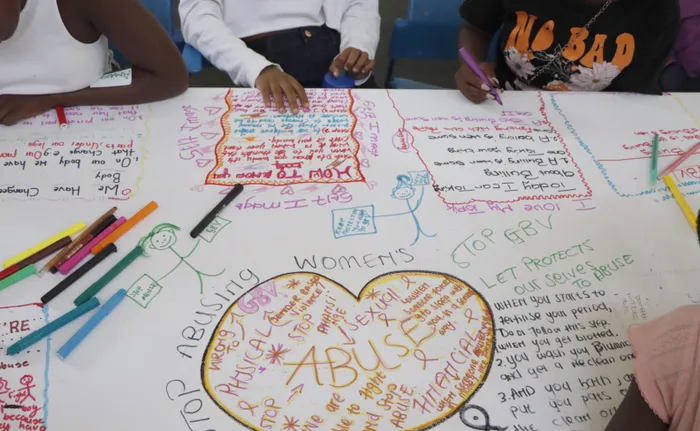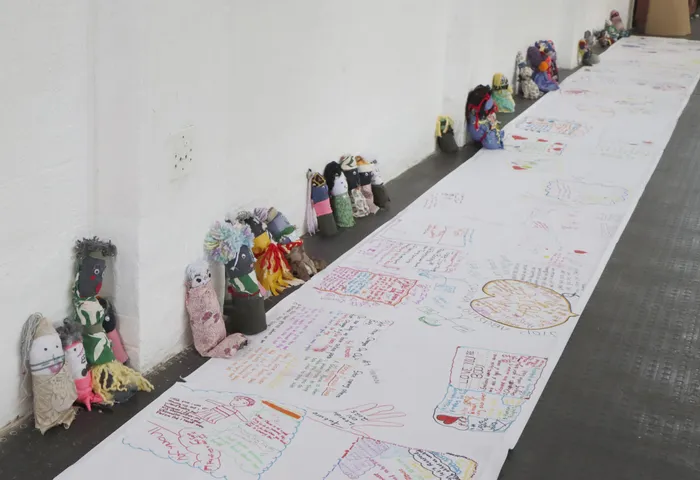Healing across generations: How art is opening up conversations about GBV in Alexandra
In many instances older women frequently raise children in theabsence of parents
In a small room filled with colour, fabric, and quiet courage, adolescent girls and their grandmothers are making dolls. These, however, are no ordinary dolls, they’re powerful symbols of healing, strength, and intergenerational dialogue about one of South Africa’s most difficult conversations: gender-based violence (GBV).

The Sarraounia Public Health Trust is a not-for-profit public health organisation based in Johannesburg, South Africa. Established in 2008, the Trust works at the cutting edge of development and change in public health through research, advocacy and intervention programs.
Image: Supplied
In a first-of-its-kind collaboration, four community-driven organisations namely, The Sarraounia Public Health Trust, Lefika La Phodiso, The Trinity Session, and goGOGOgo (NGO), have joined forces through the Masikhulume project to bridge the silence around GBV in Alexandra by using the arts.
The project, funded by the Department of Sports, Arts and Culture, focuses on adolescent girls and their grandmothers, often an overlooked relationship in South Africa, given that in many instances older women frequently raise children in the absence of parents.
“Talking about GBV isn’t easy, but creativity can open the door. Through puppet-making, mapping their communities, and exploring personal boundaries, girls and gogos were able to speak, reflect, and heal together,” says Rozanne Phodiso, Managing Director at Lefika La Phodiso, a psychosocial arts organisation.
The workshops which started in November 2024 and ended in February 2025 at the Itlhokomeleng Association for the Aged and Disabled, saw young girls between the ages of 10 to 19, along with their caregivers engaged in art-led psychosocial education. Sessions covered reproductive health, consent, emotional abuse, and safety in a way that was age-appropriate and rooted in shared storytelling.
The project culminated in an intergenerational dialogue at the Spark Gallery in Orange Grove, where participants mapped spaces of safety, and risk in their community and held conversations on topics that had previously been difficult for adolescents and their grandmothers to discuss together.
“Some teenagers shared their painful experiences of emotional blackmail, coercion, and silence. Many were afraid to speak to their gogos about sex or abuse because they did not want to be judged, and that’s where this work becomes life-changing,” added project manager Nobukhosi Ncube.

The Sarraounia Trust collaborates with diverse stakeholders to promote evidence-based solutions that improve health outcomes, particularly in underserved communities. Our work spans key areas such as maternal and child health, infectious disease prevention and gender-based violence, with a strong commitment to systems thinking, reaching vulnerable populations and enhancing women and youth engagement through participatory approaches.
Image: Supplied
However, it wasn’t just the young people who found their voices during the sessions, with one grandmother sharing how she had been dying inside with no one to talk to. Others echoed their relief and gratitude for a space where their pain and wisdom were not only welcome but valued. Jane Simmonds, Director of goGOGOgo, says this highlights a major gap in how we address violence in communities.
Simmonds said: “Intergenerational trauma is real, and healing starts with being heard. Our gogos carry a lot. The Masikhulume project showed just how important it is to involve them meaningfully, not just as caregivers but as people with their own stories.”
With rates of GBV remaining staggeringly high in South Africa, particularly among adolescent girls, the Masikhulume project offers more than temporary relief. It models a sustainable, community-rooted approach to prevention, using arts to transform silence into connection.
And as government, NGOs, and communities continue to search for effective GBV interventions, this project reminds us that sometimes, the most powerful tools are found in shared space, open conversation, and a simple doll stitched by two generations.